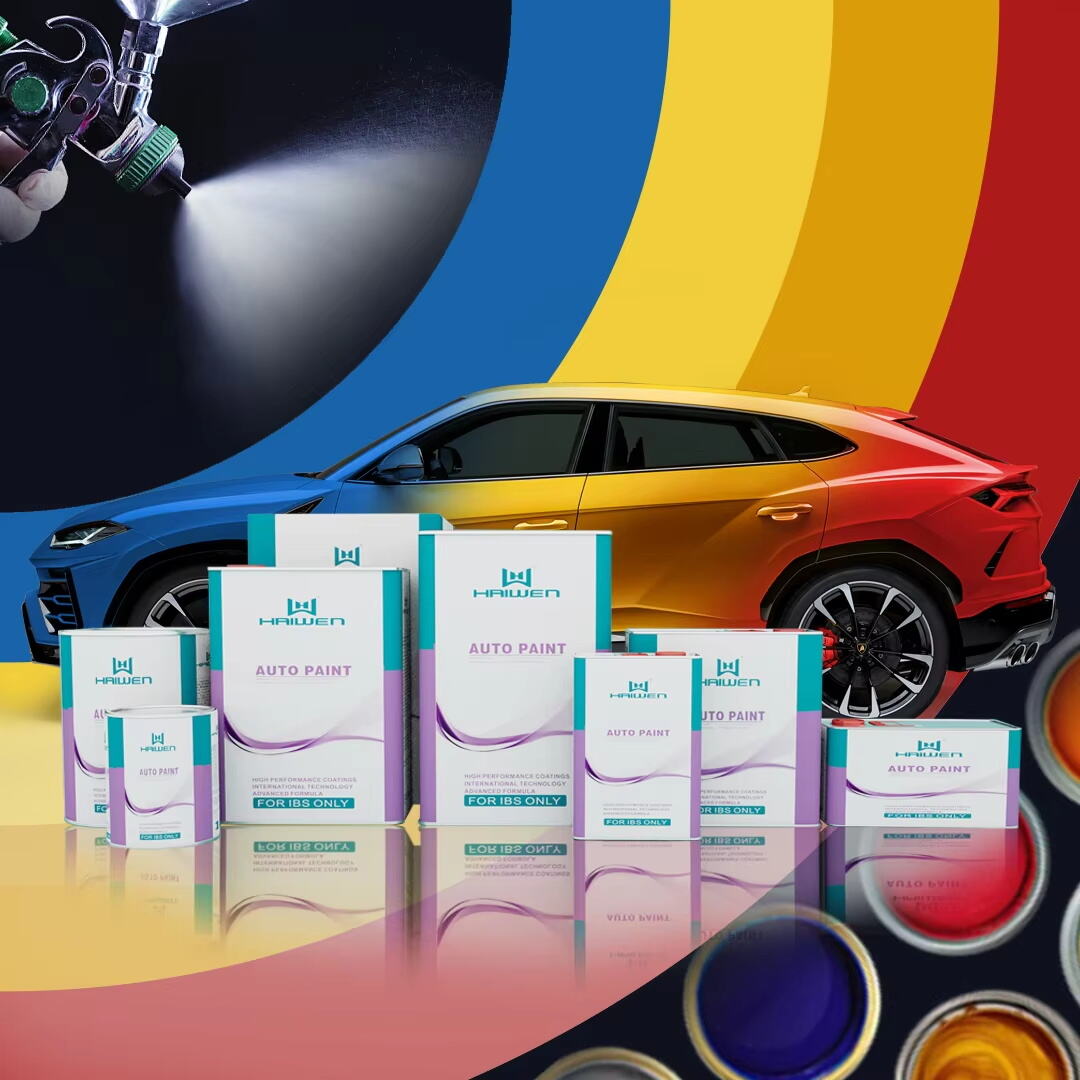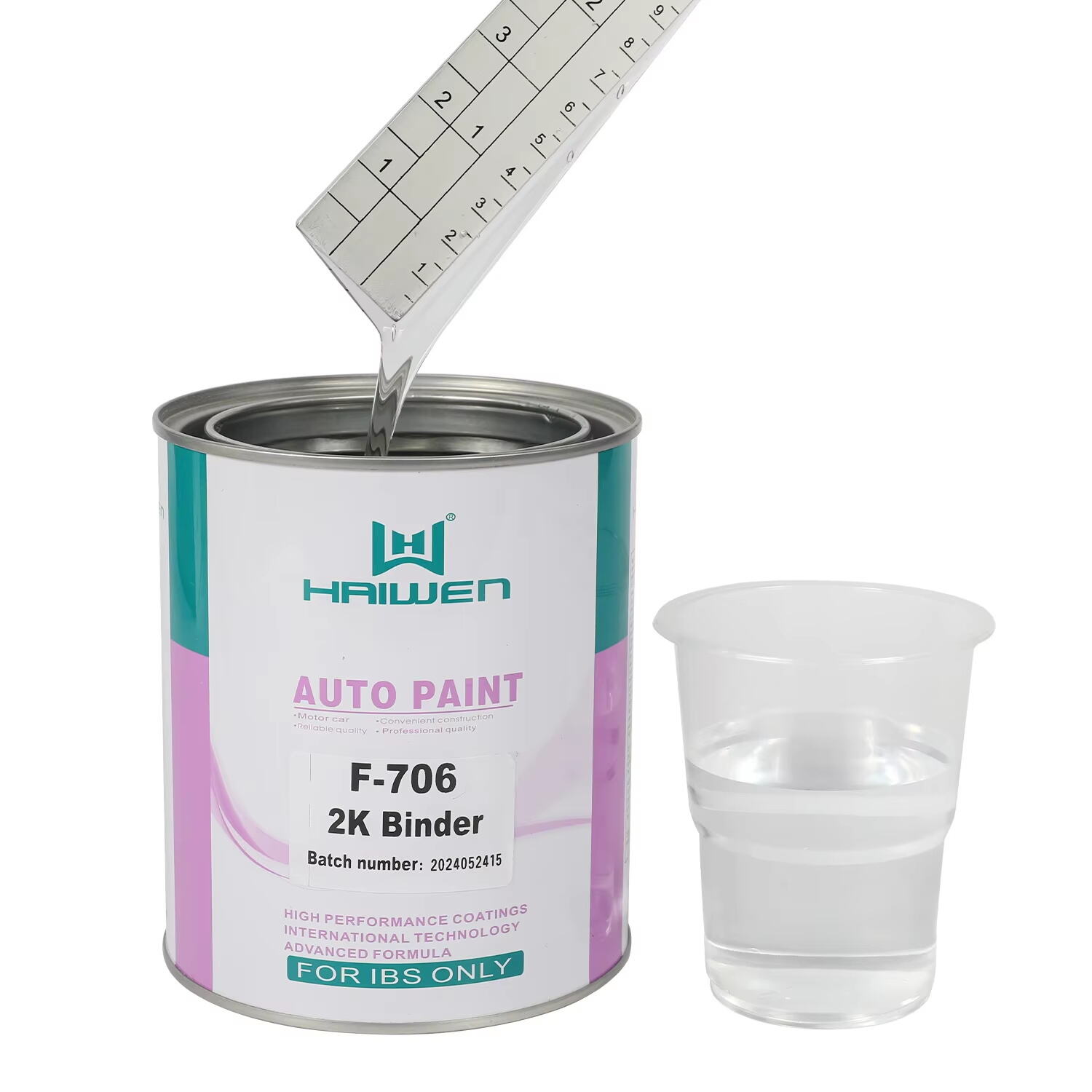Why primers matter
Every professional refinishing project depends on the right preparation. Before paint layers or clear coats can enhance the look of a vehicle, the foundation must be protected. Epoxy primer is often described as the first line of defense against corrosion, ensuring that metal substrates remain sealed and resistant to moisture or chemicals. When paired with Automotive Putty, the primer plays an even more critical role, as putty repairs must be sealed to prevent water penetration or surface defects. Without primer, even the most advanced coatings cannot achieve durability. For this reason, epoxy primer is considered indispensable in the refinishing process.
Characteristics of epoxy primer: Adhesion, corrosion resistance, sealing power
Strong adhesion to metal and repaired surfaces
Epoxy primers are renowned for their excellent adhesion properties. They bond firmly to bare metal, creating a surface that subsequent coatings can grip with confidence. Automotive Putty repairs also rely on primer adhesion to ensure that filled dents and leveled surfaces remain intact under layers of paint. This strong adhesion prevents peeling or flaking and guarantees a finish that lasts.
Corrosion resistance for long-term protection
Why does corrosion remain one of the biggest threats in refinishing? Metal exposed to oxygen and moisture inevitably rusts. Epoxy primers act as a barrier, sealing the surface and preventing contaminants from reaching the metal. When applied over areas where Automotive Putty has been used, epoxy primer ensures that no hidden flaws or pinholes allow corrosion to develop underneath. This makes it essential for longevity in automotive projects.
Sealing power for comprehensive coverage
In addition to adhesion and corrosion resistance, epoxy primer provides sealing power. It locks in repaired surfaces, protects welded areas, and ensures that Automotive Putty is not compromised by environmental factors. By creating a uniform sealed surface, epoxy primers enhance the performance of basecoats and clear coats that follow.
Comparison with other primers
Epoxy primer vs. etch primer
Etch primers contain acidic components designed to bite into metal for adhesion. While effective for bare metal, they lack the sealing and corrosion resistance of epoxy primers. In contrast, epoxy primers not only bond strongly but also create a waterproof barrier. This difference is critical when Automotive Putty is part of the repair, as epoxy primers ensure the putty remains protected.
Epoxy primer vs. 2K primer
Two-component (2K) primers provide good build and sanding properties, but they are not as resistant to corrosion as epoxy. Epoxy primer is often applied first, followed by a 2K primer for leveling before paint. This combination ensures both durability and a smooth finish over areas treated with Automotive Putty. The sequence highlights epoxy’s role as the foundation in the primer hierarchy.
Epoxy primer vs. filler primer
Filler primers are designed to build thickness and smooth small imperfections. However, they do not offer strong sealing power. Epoxy primers, with their corrosion resistance, are applied before filler primers to guarantee long-term protection. Especially in automotive refinishing, Automotive Putty repairs should always be sealed with epoxy before filler layers are introduced.
Application: Mixing ratio, spraying layers, drying time
Correct mixing for reliable results
Epoxy primers are typically two-component systems requiring precise mixing with hardeners. The recommended ratio must be followed carefully, as improper mixing can lead to weak adhesion or poor curing. When sealing areas repaired with Automotive Putty, correct mixing ensures that the primer bonds securely and creates a strong foundation for further coatings.
Spraying technique for even coverage
Spraying epoxy primer demands consistent technique. Overlapping strokes at the correct distance ensure uniform thickness without runs or sags. Applying the primer evenly across metal panels and over Automotive Putty repairs guarantees consistent sealing. Any missed areas may lead to weak points where corrosion can start, so attention to detail is vital.
Drying and curing for durability
How long should epoxy primer cure before further steps? Drying time depends on temperature, humidity, and air circulation. Adequate curing is necessary before sanding or applying topcoats. Rushing this stage risks damaging both the primer and any Automotive Putty repairs underneath. Allowing proper curing creates a durable foundation that resists environmental stress.

Marine, industrial, construction machinery
Marine applications for corrosion resistance
Epoxy primers are widely used in the marine industry, where surfaces are constantly exposed to saltwater. Their sealing power prevents rust and extends the life of boats and ships. Just as Automotive Putty repairs require sealing in vehicles, marine equipment relies on epoxy to protect welds and coated areas against harsh conditions.
Industrial equipment and construction machinery
Heavy machinery faces constant wear, exposure to chemicals, and extreme weather. Epoxy primers ensure that these machines remain functional and free from corrosion damage. Their ability to seal and protect is just as vital as in automotive projects. When paired with surface fillers or putties, epoxy creates a finish that endures under pressure.
Epoxy primer ensures durability from the ground up
Protecting metal and repairs
Epoxy primer is more than a coating—it is the foundation of durability. Its adhesion, sealing ability, and corrosion resistance make it indispensable in refinishing. Automotive Putty repairs particularly benefit from this layer, as epoxy prevents imperfections from weakening under stress.
Essential across industries
From cars to ships and industrial machinery, epoxy primer proves its value in every setting. It ensures that surfaces remain stable, coatings adhere properly, and corrosion is held at bay. For automotive refinishing, epoxy primer stands as the ultimate shield, making it the first and most important step in creating a durable finish.
FAQs
What makes epoxy primer different from other primers
Epoxy primer provides superior adhesion, sealing, and corrosion resistance. Unlike etch or filler primers, it protects both bare metal and Automotive Putty repairs from moisture and chemicals.
Can epoxy primer be applied directly over Automotive Putty
Yes, epoxy primer is designed to seal and protect surfaces, including areas treated with Automotive Putty. It prevents moisture from penetrating repairs and ensures a smooth, durable foundation.
How long does epoxy primer need to cure before topcoating
Curing time depends on environmental conditions, but full curing is essential before sanding or painting. Proper curing ensures that both the primer and Automotive Putty repairs remain stable and durable.
Is epoxy primer only for automotive use
No, epoxy primer is also widely used in marine, industrial, and construction industries. Its corrosion resistance and sealing properties make it valuable wherever metal protection is required.



